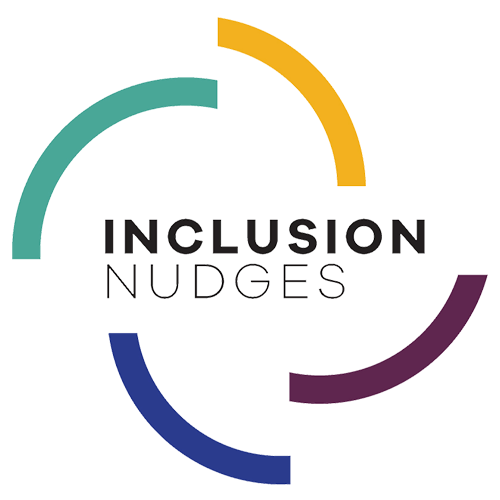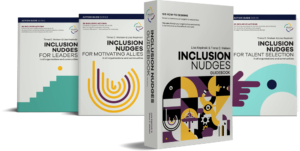In uncertain times (like the one we are in with the global pandemic and many others), it matters more than ever to have diversity on your team. A specific kind of diversity, that is. And one that goes beyond gender and race diversity, which are often given the most attention in the business case literature about all the benefits of diversity in teams. Continuously, more studies are finding that having the right mix of cognitive diversity in teams is a differentiator, and this is often overlooked. So, let’s give it some more attention.
We all know by now that diversity of thinking and applying diverse perspectives is a source for enhancing innovation, improving problem solving, and reducing risks. When combined with inclusive leadership, it is also a way to smooth the implementation of better decisions due to more buy-in and trust. Yet, many organisations and diversity, equity, and inclusion (DEI) efforts still focus on achieving demographic parity and representation in teams. It’s when we focus on all these aspects that we can truly harvest the potential from all the diversity people represent.
What does research show about cognitive diversity
The professors, researchers, and authors Alison Reynolds and David Lewis have been studying for decades how people think about and engage with new, uncertain, and complex situations and what makes the best teams at solving problems (and the fastest). Their studies unanimously show that those teams are cognitively diverse and have psychological safety.
The people in these teams typically show curiosity and experimentation, whereas teams that are low on either of these two traits were prone to group conformity or too combative.
In their research, they divide cognitive diversity into two types, based on an assessment tool developed by the psychiatrist Peter Robertson, which looks at the information processing style and expertise facilitation. This is based on the following.
Knowledge and information processing:
This is the extent to which people prefer to consolidate and implement existing knowledge or prefer to generate new knowledge when faced with new situations, uncertainty, and complex issues.
Perspective and expertise facilitation:
This is the extent to which individuals prefer to apply their own expertise or prefer to orchestrate other people’s ideas and expertise when faced with new situations and uncertainty.
The teams where members have a high degree of diversity on both parameters combined perform best in new, uncertain, and complex situations. They simply have access to more knowledge and perspectives and combined with a culture of psychological safety they encourage and engage in behaviours and ways of collaborating that lead to constructive conflict and exploration.
Cognitive diversity is also about personality styles, such as extroversion and introversion, and mental frameworks and approaches to risk, processes, complexity, and much more. This differs for people, hence the need for complementary team members.
It does makes sense that dealing with unknown issues requires that we apply both what we know and explore what we don’t know. But striking a balance can be quite difficult. Right now, this might not even be the biggest challenge, but it’s more the fact that we do not give cognitive diversity enough attention by composing teams to strike that balance. The focus on demographic diversity is overshadowing. Don’t get us wrong. This is still important, but we have to also harvest the benefits of diverse ways of processing information and expertise and the perspectives we apply.
Practice inclusive leadership and inclusive culture that ensures that the team members feel they are treated with fairness and respect, feel valued, feel that they belong to the group, feel they are invited to speak up and encouraged to share their perspectives, and feel empowered.
This does require that both the leader and the team members work on multiple aspects at the same time. This is why, we (Tinna and Lisa) created the Inclusion Nudges Inclusive Action Model to give an overview of the many ways to create inclusive cultures, structures, and behaviours in a holistic approach.

While we in 2021 are seeing an increase in CEOs and world leaders finally supporting and advocated for diversity, equity, and inclusion, the challenge is however cascading this executive level of support across all levels of management in organisations and ensuring action-taking happens. This is how cultures change to be more inclusive
The behaviours of leaders can drive up to 70 percentage points of difference between the proportion of employees who feel highly included and the proportion of those who do not, according to Deloitte Australia’s diversity research. And for minority group members, inclusive leadership behaviour has an even bigger effect.
Despite that we (Lisa and Tinna) see an increase of leaders taking action to make changes in the organisations we work with, it is still the majority of leaders that ‘feel ill equipped’ to act inclusively (they often tell us they don’t know how to do it) and especially when it comes to having conversations and facilitating dialogues about issues related to people feeling excluded and discriminated.
That is why we wrote the Action Guide called Inclusion Nudges for Leaders with 30 easy-to-apply inclusive actions. Leaders across organisations and sectors are applying these behavioural designs to make inclusion the default and norm in their leadership and with great success. What’s especially powerful is that when leaders have the book, they are supported by the step-by-step action descriptions and are able to apply these proven designs in their daily work. Their confidence in understanding and taking one action to be more inclusive increases confidence to take more actions, sparking a wider culture change. This is why we wrote this and the other Inclusion Nudges guidebooks. We wanted to break the dynamic of leaders feeling they can’t take action because they don’t know where to start and what to do, and feeling a risk of blame and shame if they openly admit that.
We hope you will find inspiration in these Inclusion Nudges, as well. And please do share with us, if you have examples that can enable and empower others.
Other Inclusion Nudges blog articles that you might like to read:
4 Ways You Access Diverse Insights for Innovation
3 Inclusive Actions for Psychological Safety







